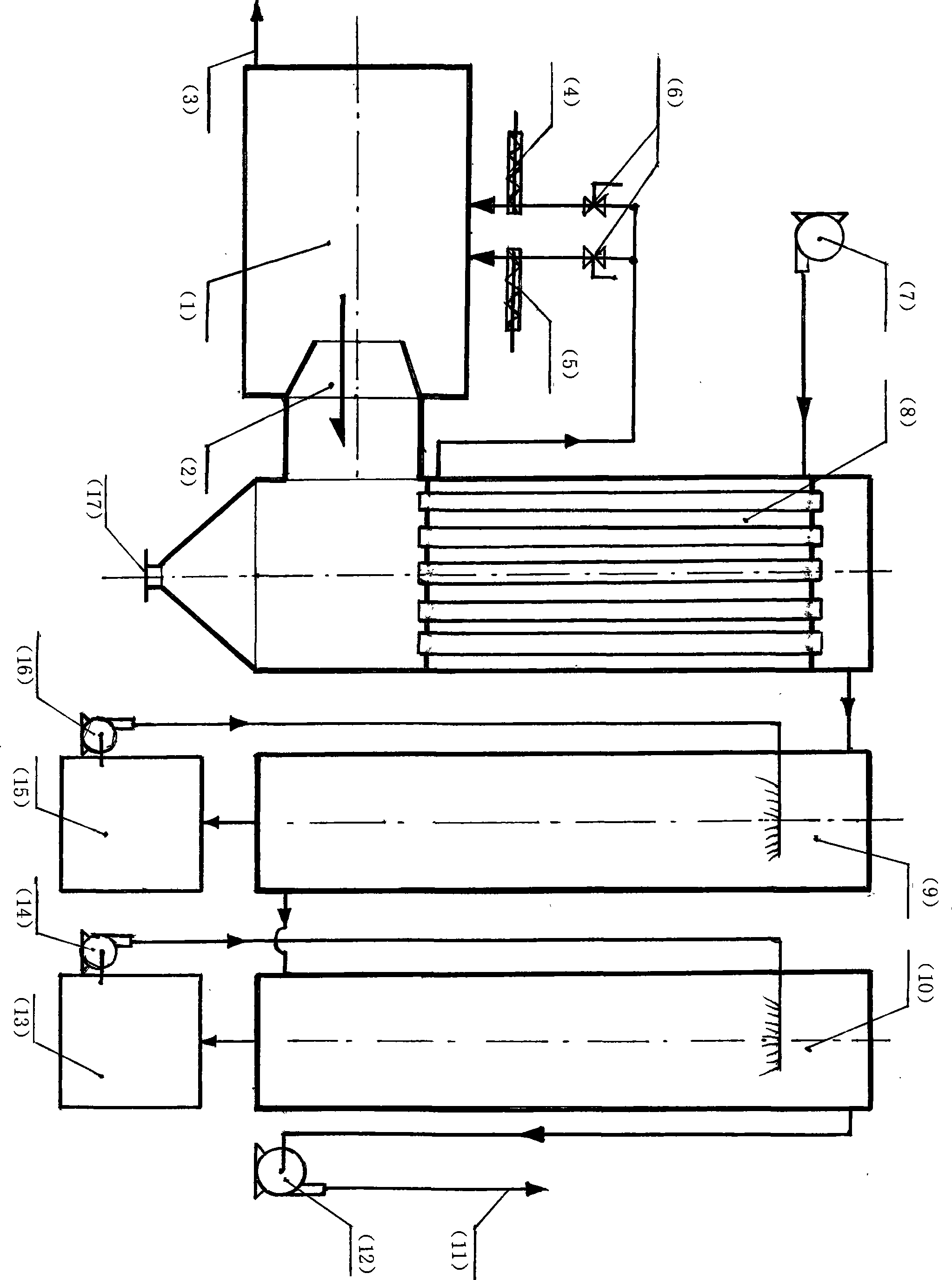Method for producing phosphoric acid from phosphate ore by displacement method
A replacement method and phosphate rock technology, applied in the direction of phosphoric acid, phosphorus oxyacid, etc., can solve the problems of blocked industrial application, large amount of dust in the furnace gas, and can not be added, so as to achieve easy operation of gas separation and control methods , The furnace gas flow rate is reduced, and the effect of saving carbon for reduction
- Summary
- Abstract
- Description
- Claims
- Application Information
AI Technical Summary
Problems solved by technology
Method used
Image
Examples
Embodiment Construction
[0013] The pulverized coal is sprayed into the rotary kiln (1) through the feeder (4) with air preheated to below 300°C for rotary combustion, the air coefficient is controlled at 1.05, and the air volume for pulverized coal injection accounts for 20% of the total air consumption. Fineness: 6 mesh Pass rate: 60%. When the temperature in the kiln (1) reaches 1450 ° C, the mineral powder is sprayed into the rotary kiln (1) with preheated air through the quantitative feeder (5) to carry out high-temperature melting displacement reaction, and the temperature in the rotary kiln is kept at 1450-1600°C. According to the amount of CaO in phosphate rock / SiO 2 =1.35 (in dry basis weight ratio), carry out the batching of phosphate rock powder and silica powder that is: SiO in silica powder amount=CaO / 1.35-phosphate rock 2 Amount ÷ SiO in silica 2 content. Control the amount of secondary air for spraying mineral powder to 80% of the total air amount, and the P generated by coal combus...
PUM
 Login to View More
Login to View More Abstract
Description
Claims
Application Information
 Login to View More
Login to View More - R&D
- Intellectual Property
- Life Sciences
- Materials
- Tech Scout
- Unparalleled Data Quality
- Higher Quality Content
- 60% Fewer Hallucinations
Browse by: Latest US Patents, China's latest patents, Technical Efficacy Thesaurus, Application Domain, Technology Topic, Popular Technical Reports.
© 2025 PatSnap. All rights reserved.Legal|Privacy policy|Modern Slavery Act Transparency Statement|Sitemap|About US| Contact US: help@patsnap.com

